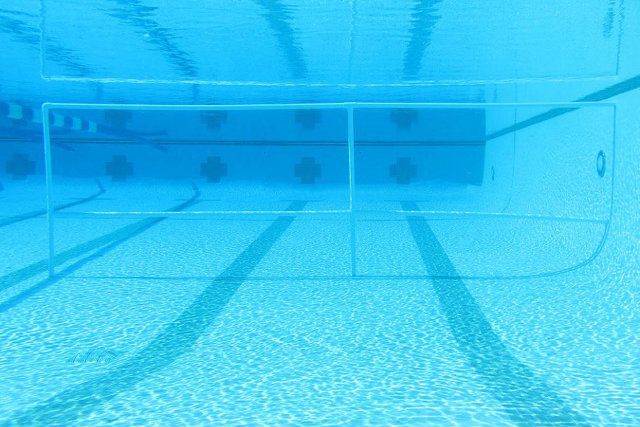I teach adults how to swim — but not just any adults. All of my students are people who have a deep fear of water.
I call them afraid-in-water adults. These are people who can’t be at peace for at least five minutes in deep water and 10 feet from a wall or support.
They’re not your typical students, so why should they learn in a typical pool?
I was a swim-school owner for 33 years, conducting classes for adults in various pools throughout the U.S. before finding a facility I can call my own. In May, I celebrated my one-year anniversary operating the nation’s first pool exclusively for teaching mature beginning swimmers. This is part of my program Miracle Swimming For Adults in Sarasota, Fla.
The facility was formerly occupied by a Jewish community center. In many ways, it’s the perfect place to teach the panic-prone to overcome their fear. It includes two pools. In the 2-foot-deep pool, beginners can feel comfortable learning how to float. This is where classes begin before students graduate to the six-lane, 25-meter pool.
This main pool is shallow on both ends and deep in the middle, providing ample space where students can learn to become comfortable in the water. However, this configuration has one major drawback. One exercise I like students to try, when they feel confident enough, is to swim across a corner of the deep end where the walls form a right angle. But, again, the pool is shallow at both ends, so there is no corner with deep water.
Solving this problem led to the development of a very effective teaching tool.
Before Miracle Swimming could open the facility for business, the aged pool needed to be replastered — a project generously funded by a $48,000 Kickstarter campaign. During its refurbishment, I had contractors install anchors on the bottom and sides, allowing us to affix PVC rails that run across the pool’s deep midsection.
Story continues below
-
Adults Who Can’t Swim Finally Have a Pool of Their Own
Miracle Swimming for Adults, a 33-year-old program, will open the nation's very first pool dedicated to mature beginning swimmers.

Both are split-rail fences with the top rail just a few inches below the surface. They give fearful adults a sense of security as they explore how their bodies work in water.
Students can place their hands on the top and their feet on the bottom rail and gradually feel their bodies float up. The rail actually provides more assurance than a pool wall: When these adults let go of the pool’s coping, they are an arm’s length away from land. For someone deathly afraid in the water, that can feel like being in the middle of the ocean. The rail, on the other hand, allows them to experience buoyancy while keeping a chest-level grip on a secure structure.
These adults also can venture to the very end of a rail, placing them in the center of the pool. From here, they can climb down the rail’s vertical post until they reach the bottom. Keeping a loose hold on the post, they can feel the water push them up to the surface.
For many, just getting out into the middle of the pool, far from terra firma, is a tremendous feat. To see them actually enjoying themselves, playing in water over their heads, is a sight to behold. What’s even more incredible is watching them learn basic swimming skills. Kicking off from the sidewall, they can reach the rail easily from short distances. As they work up their confidence, they can start farther and farther from the rail, until they’re swimming freely in deep water.
At Miracle Swimming, we never push our students outside of their comfort zones. To overcome fear, they must listen to their bodies. That’s the difference between managing fear and healing fear. We’re all about healing fear. That means they’re the ones who decide how long to hold their breath and how far to swim. They set their own goals.
I have more anchors in the bottom of the pool. These soon will hold a 1- to 2-foot tall platform that will span the length of the pool. That way, students can swim across the deep section knowing there’s place to pause if they need it.
Again, it’s all about allowing them to make progress at their own pace.









